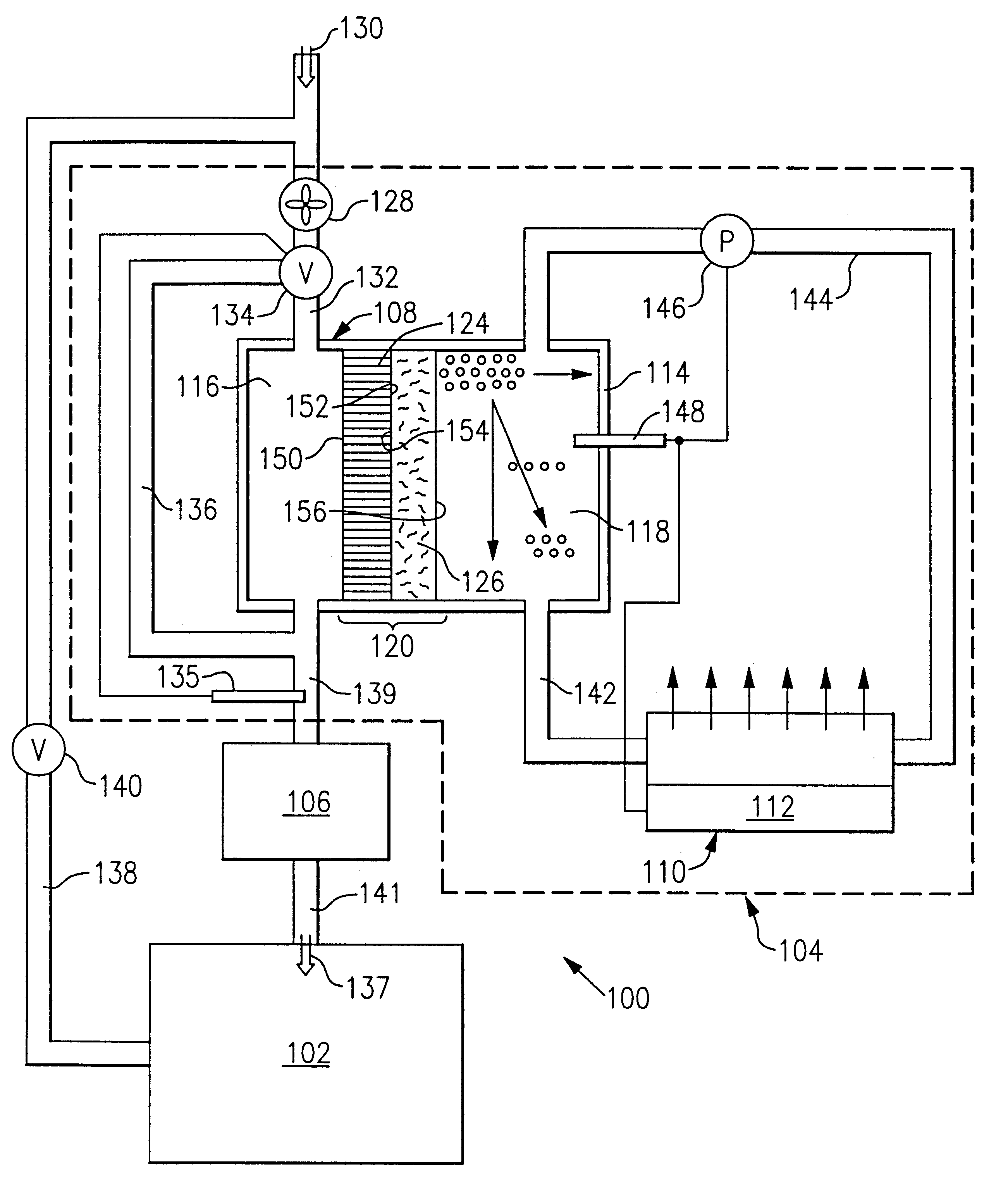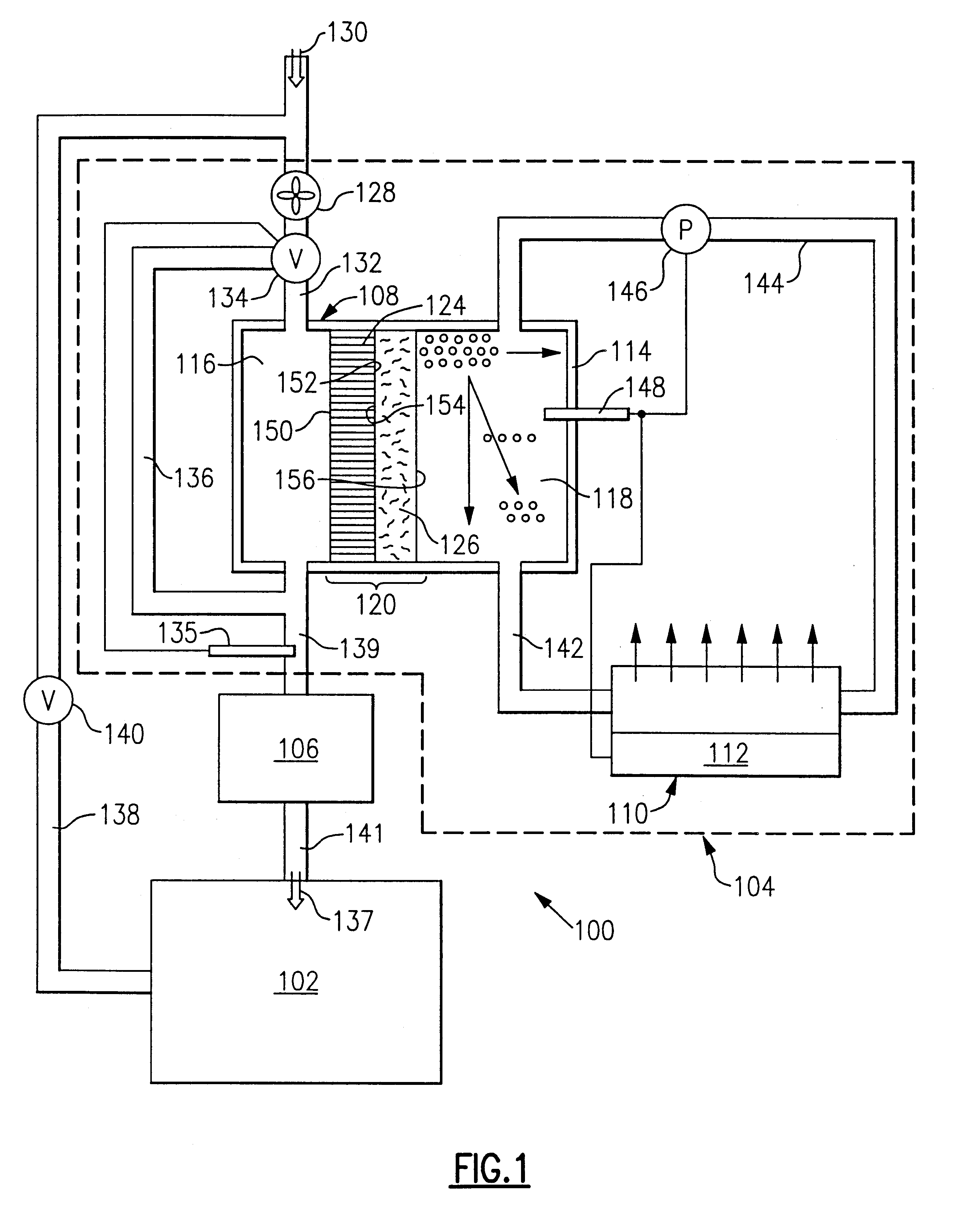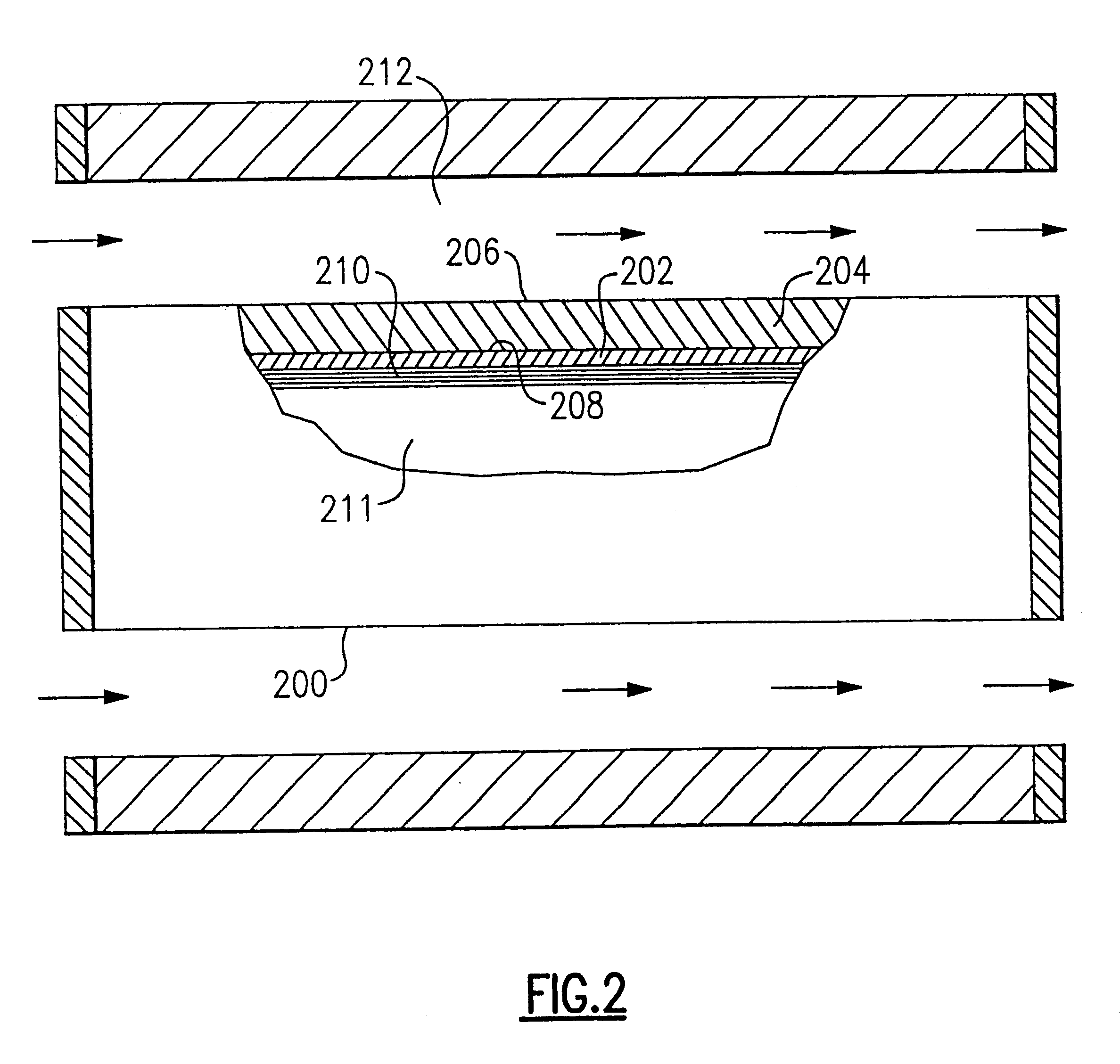Dehumidification process and apparatus using collodion membrane
a collodion membrane and dehumidification process technology, applied in the direction of lighting and heating apparatus, separation processes, heating types, etc., can solve the problem of likely reverse transport, and achieve the effect of less energy, relatively simple and energy-efficient process, and rapid and efficient water capture capability
- Summary
- Abstract
- Description
- Claims
- Application Information
AI Technical Summary
Benefits of technology
Problems solved by technology
Method used
Image
Examples
Embodiment Construction
An osmotic layer or membrane was prepared by coating a thin layer of collodion (cellulose nitrate base polymer) onto the inner surface of a commercial alumina cylindrical tube having an asymmetric pore distribution. This tube is the condenser layer of the present invention and is represented by the reference numeral 200 in FIG. 2. The porous wall of the tube had an inner alpha-alumina capillary pore layer 202, 20 nanometers thick, and an outer gamma-alumina larger pore support layer 204 of gamma alumina 3.times.10.sup.6 nanometers thick. The capillary pore layer had a pore size of 40 Angstrom, and the support layer had a porosity decreasing from about 1.0 micron at the tube outer surface 206 to about 2.times.10.sup.-3 microns at the interface 208 with the capillary layer 202. The thin collodion layer is designated by the reference numeral 210. Prior to coating, the tube had an inner diameter of 0.7 cm, an outer diameter of 1.0 cm, and a length of 5.0 cm. The coating was accomplished...
PUM
 Login to View More
Login to View More Abstract
Description
Claims
Application Information
 Login to View More
Login to View More - R&D
- Intellectual Property
- Life Sciences
- Materials
- Tech Scout
- Unparalleled Data Quality
- Higher Quality Content
- 60% Fewer Hallucinations
Browse by: Latest US Patents, China's latest patents, Technical Efficacy Thesaurus, Application Domain, Technology Topic, Popular Technical Reports.
© 2025 PatSnap. All rights reserved.Legal|Privacy policy|Modern Slavery Act Transparency Statement|Sitemap|About US| Contact US: help@patsnap.com



